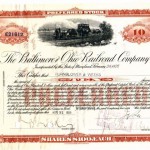How to Develop an Investing Strategy
An investing strategy is a plan for growing money through investments. An investing strategy includes setting financial goals, choosing suitable investment types (like stocks, bonds, or real estate), determining your risk tolerance, diversifying your investments to reduce risk, monitoring your investments regularly, and adjusting the plan as needed.
Liquidity, Risk, and Potential Returns
All investments balance liquidity, risk, and potential returns. The balance among these three areas depends on your own individual taste, but how you view them will determine what kinds of investments you choose.
- Liquidity: Liquidity refers to how easily and quickly an asset can be converted into cash without losing its value. High liquidity means that the asset can be sold quickly at a fair price, whereas assets with low liquidity might take longer to sell or might require a discount to attract buyers.
- Risk: In the context of investments, risk refers to the degree of uncertainty about the possible outcome. High-risk investments have a greater chance of losing money, but they may also offer higher potential returns. Low-risk investments are generally more stable and reliable, but they tend to offer lower returns.
- Potential returns: Potential returns are the possible profits or gains an investor could earn from an investment. Investments with higher potential returns are usually associated with greater risk, as there’s more uncertainty about whether the investment will actually result in a profit. Conversely, investments with lower potential returns are typically less risky but also have limited profit potential.
Security Types
Security types refer to different categories of financial investments, such as stocks, bonds, and mutual funds. Each type has its own characteristics, risks, and potential rewards, which contribute to a well-rounded investment portfolio when combined strategically.
Cash And Bank Deposits

Liquidity: Very High
Risk: Low
Potential Growth: Zero or Negative
Cash and bank deposits are considered a low-risk security type where money is either kept in physical form (cash) or stored in a bank account (deposits). They have high liquidity, as they can be quickly and easily accessed whenever needed. Though cash and bank deposits are generally safe and stable, they offer limited potential growth compared to other investment options.
Having immediate access to cash is important, which is why emergency funds are often stored as cash or bank deposits instead of assets like gold bars. However, keeping cash at home, in a safe, or a safety deposit box does not increase its value. Even cash in a savings account might lose value over time due to inflation.
Certificates of Deposit

Liquidity: Low
Risk: Low
Potential Growth: Low
Certificates of Deposit (CDs) are a type of low-risk investment offered by banks and financial institutions. When you invest in a CD, you agree to deposit a specific amount of money for a fixed period, typically ranging from a few months to several years. In exchange, the bank guarantees a fixed interest rate, providing you with a predictable return upon maturity, when the agreement ends.
CDs are very safe investments but they have a very low potential for growth since the interest rates are low (e.g. 0.4% to 1.6%).
Stocks

Liquidity: High
Risk: Medium
Potential Growth: High
Stocks represent a share of ownership in a company. When you buy stocks, you become a shareholder, gaining partial ownership in the business. Stocks have the potential for significant growth, as their value may increase over time based on the company’s performance. However, stocks also carry higher risk compared to other investments, as their value can fluctuate and even decrease if the company underperforms.
When investing in stocks, you have multiple options. You can purchase shares of a single company or invest in a mutual fund, which consists of multiple stocks from different companies. Another choice is an ETF, or exchange-traded fund, which contains a collection of stocks from a specific index, like the S&P 500. Regardless of the option, the investment strategy involves acquiring a portion of one or several companies, in exchange for a share of their earnings.
Bonds
Liquidity: Medium
Risk: Low
Potential Growth: Medium
Bonds are a type of investment where you lend money to an organization, such as a corporation or the government, in return for regular interest payments and the repayment of the principal amount at the end of a specified term. Corporate bonds are issued by companies to raise capital, treasury bonds are issued by the government to fund public projects, and junk bonds are high-risk, high-yield bonds issued by companies with low credit ratings. Each bond type has a different level of risk and return, with treasury bonds being the safest and junk bonds carrying the highest risk.
Real Estate

Liquidity: Low
Risk: Medium
Potential Growth: Medium
Real estate is an investment option where you purchase and own physical property, such as residential or commercial buildings, with the potential to earn income through rent or from the appreciation in value. The real estate market has experienced notable changes, like the house-flipping craze in the 1980s where investors bought properties to quickly renovate and resell for a profit. Another significant event was the housing market crash in 2007-2008, which resulted from a combination of factors, including risky lending practices and the collapse of the housing bubble, causing property values to drop dramatically.
Investing in real estate has also been a popular strategy for retirement savings. People purchase properties with the intention of building long-term wealth. As the properties appreciate in value over time, investors can benefit from selling them at higher prices or continue to rely on rental income as a steady source of cash flow upon retirement.
This approach can be an effective way to diversify one’s retirement portfolio and maintain financial security in the later stages of life.
Precious Metals

Liquidity: High
Risk: Medium
Potential Growth: Medium
Precious metals, like gold, silver, and platinum, are considered a tangible asset with intrinsic value due to their rarity, durability, and multiple uses. Investors often buy precious metals as a hedge against inflation or economic uncertainty, as their value tends to remain stable or even increase during turbulent times, providing diversification and a safe haven for one’s investment portfolio.
In 2011, the “gold bubble” burst, making the prices of the metals more volatile than before. A bubble occurs when speculators bid up prices of an item beyond its intrinsic value. The price of gold rose to $1,895 an ounce, but then began a steady decline to $1,075 an ounce.
Holding precious metals as a safeguard against market uncertainty in other security types is still very popular. However, financial planners recommend that no more than 10% of your portfolio should be invested in gold.
Derivatives

Liquidity: Medium
Risk: High
Potential Growth: High
Derivatives are financial instruments that derive their value from an underlying asset, like stocks, currencies, or commodities. Options and futures are common types of derivatives that allow investors to speculate on the future price changes of these assets.
A stock option gives an investor the right, but not the obligation, to buy or sell a stock at an agreed upon price. The stock option has value because the stock that it lets you buy has value; however, the option itself has no value unless you use it.
A futures contract is a legal agreement to buy or sell something at a predetermined price at a specified time in the future. Future contracts are used with commodities like oil, natural gas, corn, and wheat.
Derivatives are most useful for hedging, such as buying a stock option for a stock you think will go up in value that you don’t necessarily want to buy right now. Hedging is a strategy used to protect against potential losses from unfavorable market movements.
By investing in derivatives, such as buying options or entering into futures contracts, investors can hedge their risks and limit the potential impact of negative price fluctuations on their overall investment portfolios. Essentially, hedging acts as a form of insurance for the investor’s main investments.
Tips and Tricks
In the past, a common piece of investing advice for retirement planning, suggested that a significant portion of your savings should be in your home; which would appreciate in value over time along with market rates.
For the rest of your investment assets, financial planners usually recommended balancing your holdings between stocks and bonds based on your age. The strategy involved using the number 100, subtracting your age, and allocating the resulting percentage to stocks, with the remaining portion going to bonds. For example, an 18-year-old would invest 82% in stocks and 18% in bonds.
While this guidance may seem outdated, it still offers insights that investors should consider when building their investment portfolios.
Don’t Keep All Your Eggs in One Basket
Diversifying your investments is crucial at various levels, not just between asset classes, but also across sectors. Start by allocating your assets among different security types. For instance, a classic approach involves investing 50% of your savings in real estate, while the remaining 50% is divided between stocks and bonds. This way, if housing prices decline, your investments in stocks and bonds can provide some protection. Similarly, if the stock market falls, your real estate and bonds could help stabilize your portfolio.
Bonds are generally safer investments since their value is tied to prevailing interest rates, making them less susceptible to market fluctuations. They can also be beneficial during a rise in housing prices, stock prices, and interest rates, further reinforcing the importance of diversification.
Use an Evolving Portfolio
The traditional advice to invest in “more bonds as you get older” stems from the belief that your portfolio should become more conservative as you approach retirement. The idea is to minimize risk with your money as you near retirement age. If your stocks lose value when you’re 25, you have around 40 years to recover the losses before retiring. However, if your stocks decline in value when you’re 62, it’s much more challenging to compensate for the lost income, emphasizing the need for a lower-risk investment strategy in later years.
Common Investing Strategies
If you’re ready to start investing, there are a couple of strategies to keep in mind. Most long-term investing strategies are based on one, or a combination, of these.
Buy And Hold
“If you aren’t willing to own a stock for ten years, don’t even think about owning it for ten minutes.”
– Warren Buffet
The buy-and-hold strategy involves researching and selecting investments based on strong long-term potential, then holding onto them regardless of market fluctuations. A buy-and-hold investor should only consider selling when:
- The fundamental reasons for purchasing the investment change (e.g., the company’s management changes to a team with a differing business approach that you don’t support).
- You decide to exit the market completely.
Warren Buffet is widely recognized as one of the most successful buy-and-hold investors. He consistently ranks among the top richest people in the world. According to Forbes, his net worth is over $145 billion, making him one of the wealthiest individuals alive. This highlights the success of his investment strategies and why his approach is worth paying attention to.
Downside
“The market can stay irrational longer than you can stay solvent.” – John Maynard Keynes
The downside of the buy-and-hold strategy includes potential losses in uncertain markets, missed opportunities to take advantage of trends, and reactive decision-making. Buy-and-hold investors might respond too late or struggle with selling decisions, which could result in further losses.
Despite thorough research and eventual recovery of investment value, you may still face a deadline when funds are needed for retirement. There’s a real chance of making incorrect investment choices, resulting in significant losses before admitting defeat. These drawbacks highlight the need for cautious planning and risk management while following a buy-and-hold approach.
Value Investing
“Know what you own, and know why you own it.” – Peter Lynch
Value investing involves identifying undervalued stocks based on solid fundamentals. This means looking for companies that seem to be growing strongly but have not yet attracted much market attention. Or looking for new players with solid foundations and the potential for growth. You will buy and sell stocks more often with value investing.
By seeking undervalued stocks, value investors can benefit from potential capital gains when the market eventually recognizes and corrects the stock’s price, leading to higher returns. Peter Lynch was made famous by his use of value investing while acting as the primary manager of the Magellan Fund Fidelity Investments.
Downside
“The four most expensive words in the English language are, ‘This time it’s different.’” – Sir John Templeton
The downsides of value investing include time-consuming research, potential opportunity costs, and the risk of falling into value traps. Investors may encounter stocks appearing undervalued but consistently underperform due to declining industries, poor management, or other issues. These value traps can result in sustained losses, frustrating the value investing approach.
This approach demands regular evaluation of companies to determine their worth accurately. If an investor makes multiple incorrect judgments in a row, it could be challenging to recover from the losses. Hence, value investing requires attention to detail and vigilance to ensure successful results.
Active Trading
“Understanding the value of a security and whether it’s trading above or below that value is the difference between investing and speculating.” – Coreen T. Sol
Active trading is when you buy and sell stock regularly to take advantage of short-term price fluctuations, generating profits from frequent trades based on market trends and technical analysis. Active traders can adapt to changing market conditions, entering and exiting positions quickly to seize opportunities and respond effectively to various market scenarios.
This strategy requires a more advanced knowledge of chart patterns, fundamental and technical analysis, and risk management techniques, like using stop-loss orders, and position sizing to control your exposure to unfavorable market movements. Day trading is a form of active trading when you buy and sell in the same day. Day trading is more about luck than about strategy.
Downside
“The individual investor should act consistently as an investor and not as a speculator.” – Ben Graham
Actively trading can expose investors to greater risks, including market volatility, trading errors, and leverage-induced losses if you use margin accounts and borrowed funds in your trading strategy. Most professional investors and financial advisers suggest using only a very small portion of your portfolio for active trading, since the damage can be hard to undo.
Also, frequent trading often results in higher brokerage fees and commissions, which can erode the overall profitability of the active trading strategy. There is also a significant time investment to active trading since you have to constantly monitor the financial markets.
Challenge Questions
- Using examples from the lesson, explain what is meant by the term liquid.
- If you were given $100,000 today, how would you invest it and why?
- Are there any risks with any of these investments?
- Why is it important to diversify?